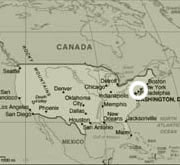|
|
|
|
|
Newark, USA by Mara S. SidneySummary Although Newark is a city on the rise, it remains a troubled city with highly unequal opportunities. During the 1960s and 1970s, Newark experienced an exodus of the middle class and the wealthy to the suburbs, leaving the working class and poor behind in the city. Today, Newark and the surrounding suburbs have reached extremes in ethnic segregation, exacerbated by a declining municipal tax base with grave influences on service delivery and the quality of life in the city. Record rates of immigration, notably from South America, have made up for the exodus of the betteroff groups in terms of urban population. The city is highly densely populated, with 11,500 persons per square mile. The city suffered major employment losses between the 1970s and 1990s and most neighbourhoods contain evidence of poverty, dis-investment and abandonment. An estimated 170,000 households in Metro Newark have ‘worst case’ housing needs, defined as renters with less than 50 per cent of the area’s median income, spending more than half of their income on rent, or living in severely inadequate housing, while not receiving government housing assistance. Today, 4000 households are on the public housing waiting list, which has been closed for years, and the wait for rental assistance is ten years. The housing stock in poor neighbourhoods includes a small number of high-rise multifamily buildings, some lowrise public housing blocks dating from the 1940s and 1950s, new public housing developments consisting of town homes, and older wood-frame houses for one to four families. Because of the city’s old housing stock, 90 per cent of the housing units are likely to be contaminated with poisonous lead paints. The tenure type is largely rental, although the North Broadway neighbourhood has an uncharacteristically high 35 per cent owner-occupier rate. With the recent economic slump, unemployment has risen to 11.4 per cent and is double the state average. Nearly 30 per cent of Newark residents are poor. The most affordable housing clearly under-serves the needy. Although considerable neighbourhood upgrading is in process, the poorest are not directly benefiting. Many of the city’s poorest sections are racially segregated, with pluralities of either blacks or Hispanics and small white populations. For example, of the three neighbourhoods profiled, two of them have black populations that make up 89 per cent of the neighbourhood’s households. In the third neighbourhood, the black population declined from 56 per cent to 31 per cent during the 1990s, while the Hispanic population grew from 40 per cent to 60 per cent. More and more immigrants arrive from South America – notably, Argentina, Brazil, Chile, Colombia and Ecuador. For more than 20 years, the Newark Housing Authority has been transforming its housing stock, reflecting shifts in federal housing policies from the 1990s, rooted in concerns about concentrated poverty and a belief in market forces. Nearly all high-rise housing has been demolished and replaced with town units of lower density, while some low rise complexes have been renovated. Poor neighbourhoods also receive assistance through state programmes. The focus of federal programmes shifted to lower-density mixed income communities; but whether such mixed-income communities will improve the neighbourhood environment, while providing a better quality of life, cannot ye beanswered. Encouraging housing (re)development has also been a priority of the current mayoral administration, with particular attention to increasing the home-ownership rate. Two state policies have addressed the problem of regional disparities. Both stem from court battles, one related to housing inequity and the other to school inequity. In theory, if housing affordability and school quality were more equally distributed across the region, Newark would not endure the level of need that it endures today. The city’s strategy for economic development has been described as largely relying on ad hoc deals secured with tax abatements, rather than carried out according to a master plan. In addition, fighting crime has been a key concern. Long-range trends show the crime rate declining, although 2001 and 2002 saw increases in homicides. City leaders see crime reduction as integral to successful economic development and home-ownership. In some respects, elements of city governance can be characterized as anti-democratic. Some have characterized city government as exclusionary and/or dis-empowering, noting that grassroots community organizations have had little success in penetrating the city hall or in influencing development policy, and that a set of well-established nonprofit organizations receive regular funding, effectively keeping them from criticizing the administration. Over the years, city officials have been convicted or accused of corrupt practices, including extortion, taking pay-offs, theft and fraud.
|
Document size: 293 KB Document size: 289 KB (b&w) |

